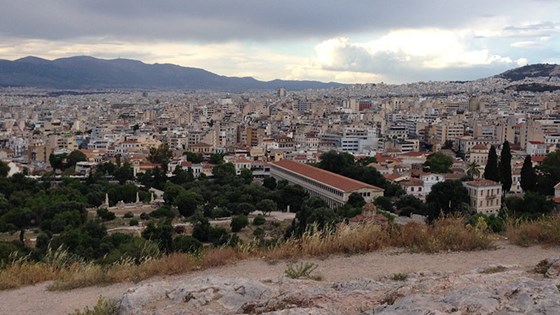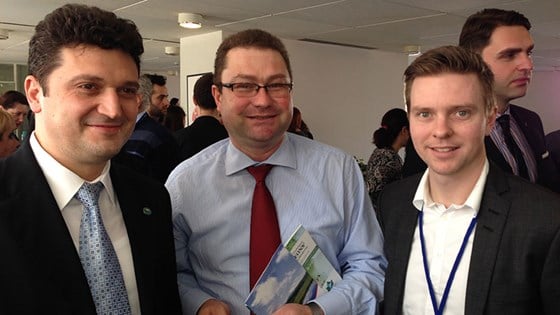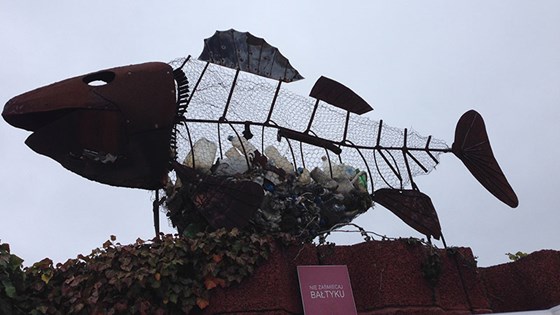The EEA grants
- Strengthened cooperation on climate, environment and cultural heritage in Europe
Article | Last updated: 17/12/2014 | Ministry of Climate and Environment
Since the EEA agreement came into force in 1994, Norway has contributed to reducing social and economic disparities in the less affluent countries in the EU and EEA. From 2004 the support was consolidated into two schemes that together constitute the EEA grants. One scheme is funded by Norway alone, while the other scheme also includes contributions from Iceland and Liechtenstein.
The EEA grants shall be used actively and strategically to support the Government's cooperation with the EU countries, and shall contribute to the green shift in Europe. For example, the grants may contribute to promoting climate measures and climate change adaptation plans, promoting biological diversity at sea and on land, safeguarding national parks and continuous green areas, reducing pollution from chemicals and the dispersion of environmental toxins, promoting energy efficiency and renewable energy, commercialising environmental technology, nuclear safety and emergency preparedness cooperation.
Strengthened bilateral cooperation
The EEA grants shall contribute to strengthening the bilateral cooperation with beneficiary countries. It offers Norwegian institutions new opportunities for cooperation and possibilities for reciprocal exchange of experience. The beneficiary countries under the EEA funding scheme are the EU's 12 newest member countries from 2004 and 2007, as well as Greece, Portugal, Spain and Croatia. Poland and Romania are the largest beneficiaries of the grants.

Environment, climate, energy and cultural heritage
Environment, energy and cultural heritage account for about 30 per cent of the grants. The environmental protection and environmental management programmes total EUR 151.6 million, climate and renewable energy EUR 279.4 million and cultural heritage and cultural values EUR 198.6 million in the period from 2009 to 2014. In addition, the Green Innovation Programme (EUR 118.9 million) contributes to supporting businesses that take responsibility for the environment. Cooperation projects contribute to promoting commercialisation of environmental technologies and a green shift in businesses in the beneficiary countries. The research programme (EUR 167.7 million) contributes to research collaboration in the area of the environment as well. The projects will be implemented by April 2016. The Ministry of Climate and Environment's subordinate departments are involved in programme and project collaborations.
Developing expert networks across country borders
The Norwegian Environment Agency is engaged in Poland, Romania, Bulgaria, Estonia, Latvia, Lithuania and the Czech Republic as a programme partner in 8 programmes. The Directorate for Cultural Heritage is involved as a programme partner in collaboration in Estonia, Lithuania, Latvia, Hungary, Romania and in smaller projects in Poland and the Czech Republic. The EEA grants represent a good opportunity for Norway to develop professional cooperation in the area of the environment and cultural heritage in the EU, to contribute to skills development in the beneficiary countries, employment and strengthen their ability to implement EU's directives more quickly and effectively. In addition, they contribute to developing expertise for the Norwegian partners.

Strengthening civil society within the environment as well
Separate funds for civil society have also been established in all the countries. Norway is one of the biggest contributors to the civil society in Central Europe. Civil society makes important contributions in the area of the environment in Central Europe, raises awareness among people, places issues on the political agenda and contributes to developing environmental policy.
Poland and Romania receive the most
Poland is the largest beneficiary of EEA grants. Here the EEA grants have contributed to developing oversight and control schemes within environmental protection, preserving cultural heritage and biological diversity. Oversight and control schemes are critical for ensuring that laws and regulations are enforced and contribute to practical results. Romania is the second largest beneficiary country. Here Norway is contributing to strengthening expertise within climate adaptation, nuclear safety and to developing improved chemical handling.

The headquarters for the donor countries contributes with advice
The headquarters for the donor countries, the Financial Mechanism Office, is situated in Brussels and contributes with guidance for the beneficiary countries and advice to authorities, agencies and other partners. Information on the schemes is available on the homepage eeagrants.org.